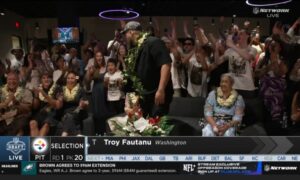There was a time when Organized Team Activities really didn’t mean all that much.
According to Bob Labriola, in fact, there was a time when it was a regular occurrence that head coaches wouldn’t even watch the entirety of the practices. Reflecting on Bill Cowher’s tenure as the Pittsburgh Steelers’ head coach after moving into Heinz Field, he wrote that at times “the head coach either wasn’t there, or he would watch a portion of the drills on a balcony overlooking the fields”.
Labriola has been stressing this point recently, and is certainly relevant as we embark on our second set of OTA practices today. That point: OTAs have risen in stature and importance, significantly so, since the new Collective Bargaining Agreement was struck in 2011.
And fortunately for the Steelers, they have a head coach that is acutely aware of this fact, as head coach Mike Tomlin, I believe, does an excellent job of using these allotted workouts appropriately, as a precursor to training camp.
So why are OTAs so much more important? Quite simply, because the CBA has vastly cut down on the amount of practice time coaches are allowed to put their players through by limiting the number of padded practices available to them and eliminating two-a-day practices altogether.
These practice elements were formerly staples of the evaluation process that coaches in Cowher’s era and beyond relied upon to get a good feel of their roster, to see who could withstand the gauntlet, so to speak.
But with the significantly truncated offseason practice schedule, what we now have is a situation in which every available opportunity for evaluation is magnified, which includes these May and June OTA sessions.
And it’s not so much that this is when the evaluations are taking place; obviously there is still much time for that. As Tomlin talked about earlier during this offseason, the nature of the early milestones, such as rookie minicamp and OTAs, is much more about instruction and education than in evaluation.
The goal here is to get your roster as prepared as they can be for training camp, which is preceded by a long layoff between then and the minicamp that follows the OTA sessions. Having a roster that is ready as it can be makes the evaluation process much easier.
It used to be pretty common that a group of players would not even attend OTAs, but as we’ve seen just recently, the first group of OTA sessions featured perfect attendance, barring excused absences.
After all, OTAs, at least with the way that Tomlin favors organizing the offseason calendar, are the first opportunity that the team gets to work together as a group in something that actually resembles what we know to be the game of football.
It may still be ‘football in shorts’, and only so much can be gleaned from it for an outsider looking for clues, but it’s become an invaluable team- and roster-building tool over the course of the course of the past five seasons, and is a new landmark in the NFL calendar.








